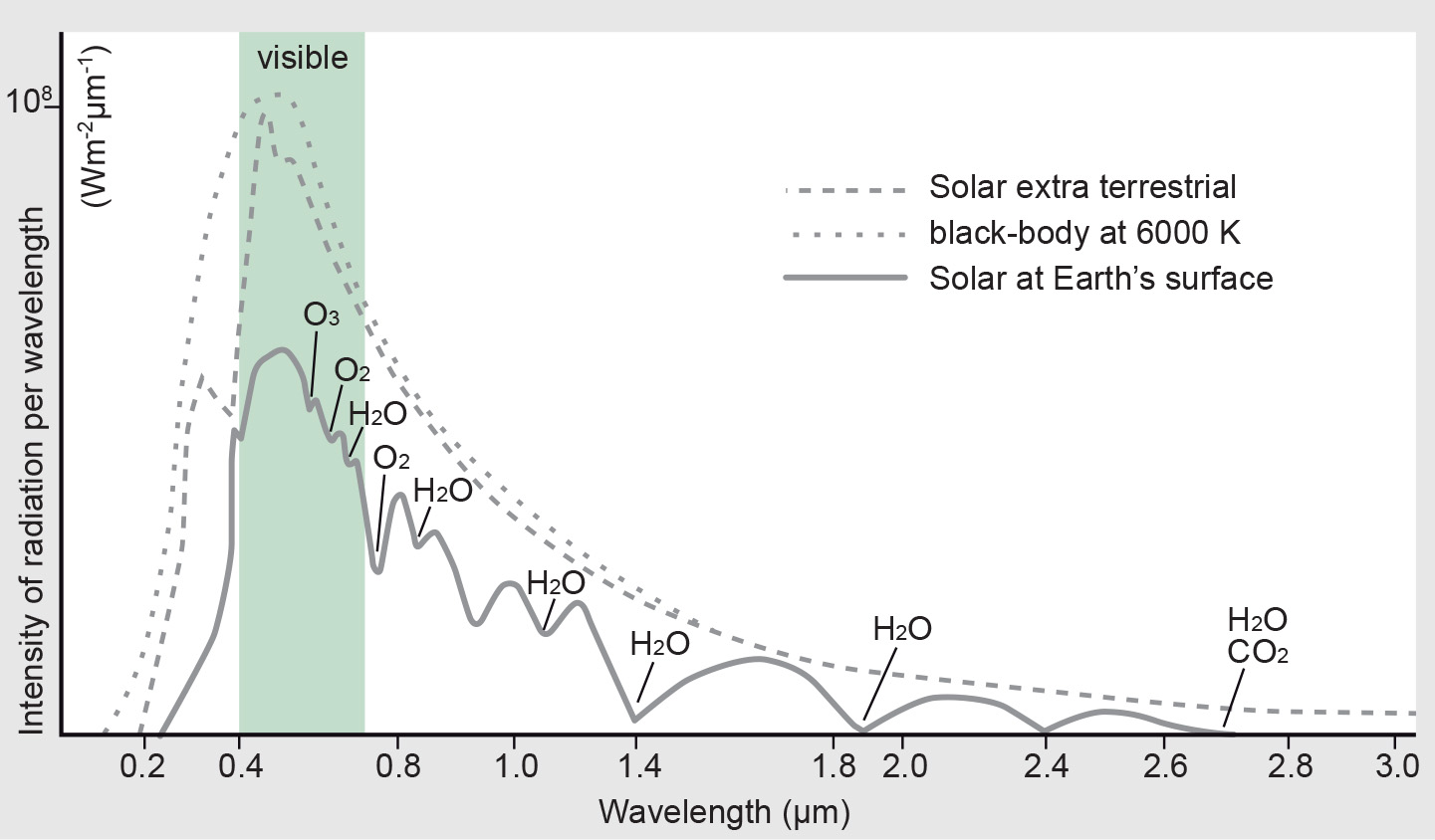Atmospheric absorption and transmission
Introduction
As it moves through the atmosphere, EM radiation is partly absorbed by various molecules. The most efficient absorbers of solar radiation in the atmosphere are ozone (O3), water vapour (H2O) and carbon dioxide (CO2).

Figure 1 shows a schematic representation of atmospheric transmission in the wavelength range 0–22 μm. From this figure it can be seen that many of the wavelengths are not useful for remote sensing of the Earth’s surface, simply because the corresponding radiation cannot penetrate the atmosphere. Only those wavelengths outside the main absorption ranges of atmospheric gases can be used for remote sensing. The useful ranges are referred to as atmospheric transmission windows and include:
- the window from 0.4 to 2 μm. The radiation in this range (visible, NIR, SWIR) is mainly reflected radiation. Because this type of radiation follows the laws of optics, remote sensors operating in this range are often referred to as optical sensors.
- three windows in the TIR range, namely two narrow windows around 3 and 5 μm, and a third, relatively broad window extending from approximately 8 μm to 14 μm.
Because of the presence of atmospheric moisture, strong absorption occurs at longer wavelengths. There is hardly any transmission of radiation in the range from 22 μm to 1 mm. The more or less “transparent” range beyond 1 mm is the microwave range.
Solar radiation observed both with and without the influence of the Earth’s atmosphere is shown in Figure 2. Solar radiation measured outside the atmosphere resembles black-body radiation at 6000 K. Measuring solar radiation at the Earth’s surface shows that there the spectral distribution of the solar radiation is very ragged. The relative dips in this curve indicate the absorption by different gases in the atmosphere. We also see from Figure 2 that the total intensity in this range (i.e. the area under the curve) has decreased by the time the solar energy reaches the Earth’s surface, after having passed through the atmosphere.

Outgoing relations
- Atmospheric absorption and transmission is part of Interaction of atmosphere and EM radiation
Incoming relations
- Atmospheric windows is based on Atmospheric absorption and transmission